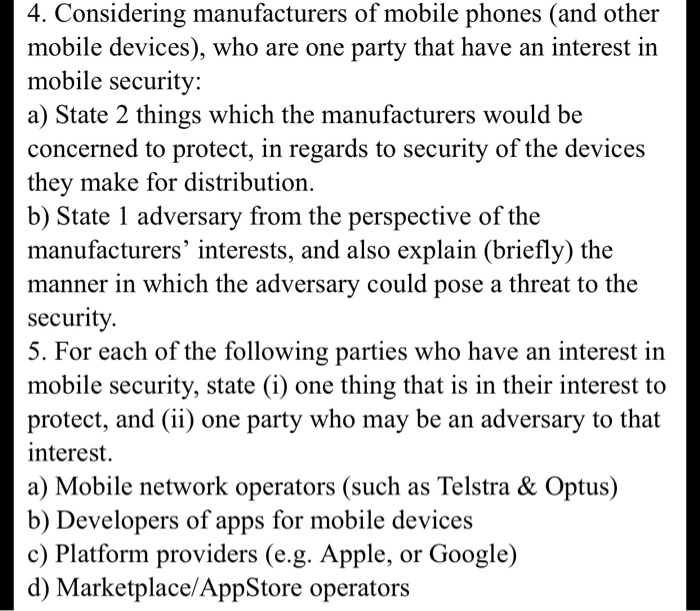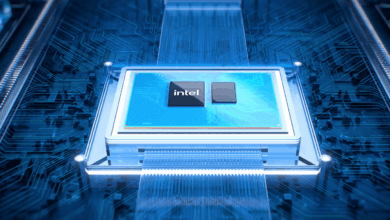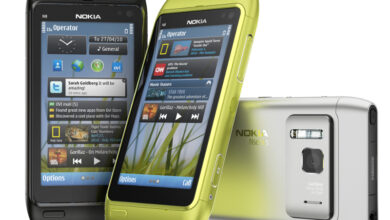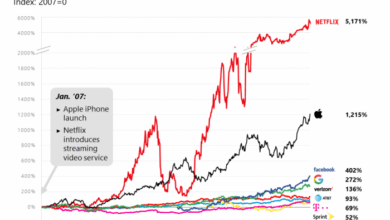Mobile Phone Vendors Drive Mobile Broadcast
Mobile phone vendors working to drive mobile broadcast are paving the way for a new era of communication. From innovative cellular and satellite technologies to the integration of 5G, these companies are aggressively developing features and services that promise to revolutionize how we consume and share information. This exploration delves into the current state of mobile broadcast, the strategies of key vendors, and the potential market impact, highlighting both the exciting opportunities and the hurdles to overcome.
The landscape of mobile broadcasting is undergoing rapid transformation. Current trends showcase a blend of existing technologies like cellular and satellite, along with emerging standards and protocols. Vendors are actively experimenting with new approaches, integrating broadcast features into their products to cater to a growing demand. This report analyzes their strategies, from service offerings to potential market influence, offering a comprehensive view of the mobile broadcast market.
Mobile Broadcast Technology Trends
Mobile broadcasting, once a niche technology, is experiencing a resurgence driven by the need for ubiquitous and high-quality content delivery. This evolution is fueled by advancements in wireless communication, particularly 5G, and the increasing demand for real-time, location-aware experiences. The current landscape offers a fascinating mix of established and emerging technologies, promising a future where mobile devices become powerful broadcast hubs.
Current State of Mobile Broadcast Technologies
Mobile broadcast technologies are currently in a transitional phase. Existing systems are being enhanced, and new standards are emerging to meet the evolving needs of consumers and broadcasters. The key challenge is to balance the diverse needs of broadcasting, from high-quality video streaming to interactive applications, with the limitations of mobile devices and networks.
Types of Mobile Broadcast
Mobile broadcasting utilizes a variety of transmission methods, each with its own strengths and weaknesses. The most common include:
- Cellular broadcasting: This leverages existing cellular networks (2G, 3G, 4G, and 5G) to transmit broadcast content. It offers widespread coverage and readily available infrastructure, but quality and bandwidth can be limited depending on network conditions.
- Satellite broadcasting: This relies on satellites to relay broadcast signals to mobile devices. Satellite broadcasting offers global coverage and consistent signal strength, but latency and cost considerations are factors to be addressed.
- Wi-Fi broadcasting: This leverages local Wi-Fi networks to deliver broadcast content. It offers high bandwidth and low latency, but its coverage area is limited to the network’s reach.
Technological Advancements Driving Mobile Broadcast
Several key advancements are propelling the development of mobile broadcast technologies. These include:
- Increased processing power in mobile devices: Modern smartphones and tablets possess the computational capabilities to decode and display high-quality broadcast content in real-time. This allows for a seamless viewing experience even with complex video formats.
- Improved network bandwidth and capacity: The rollout of 5G networks is providing the necessary bandwidth to support high-definition video streaming and interactive broadcasting. This is crucial for applications demanding substantial data transfer.
- Development of new compression and encoding technologies: Techniques are constantly evolving to compress broadcast content efficiently while maintaining high quality. This optimizes bandwidth utilization and improves the user experience.
Emerging Mobile Broadcast Standards and Protocols
New standards and protocols are emerging to facilitate the seamless integration of broadcast content into mobile experiences.
Mobile phone vendors are actively pushing for advancements in mobile broadcast technology, recognizing its potential for future growth. However, recent developments like the “big blue hits SCO with patent counterclaim” case, big blue hits sco with patent counterclaim , highlight the complex legal landscape surrounding these innovations. These legal battles could potentially slow down the progress of mobile broadcast, impacting the efforts of the vendors striving to improve the technology.
- New streaming protocols: Protocols are being designed to optimize broadcast content for mobile devices, addressing factors like latency and network instability. These protocols improve the overall viewing experience for users by adapting to varying network conditions.
- Enhanced video encoding and decoding: New video codecs are designed to achieve high compression ratios, enabling high-quality video streaming over mobile networks while maintaining reasonable bandwidth consumption.
Role of 5G and Future Wireless Technologies
G and beyond are poised to revolutionize mobile broadcasting. Its high bandwidth and low latency capabilities enable real-time, high-definition content delivery. This is particularly impactful for live events, interactive experiences, and immersive applications.
- Impact of 5G on mobile broadcasting: 5G networks are expected to drastically improve the quality and accessibility of mobile broadcast content. Increased bandwidth will enable high-definition video streaming, and low latency will make real-time interactions smoother and more engaging.
- Future wireless technologies: Beyond 5G, future wireless technologies will further refine mobile broadcasting. Technologies like mmWave and terahertz communication are expected to offer even higher bandwidth and reduced latency, paving the way for more sophisticated and interactive mobile broadcast experiences.
Comparison of Mobile Broadcast Methods
| Method | Strengths | Weaknesses |
|---|---|---|
| Cellular | Wide coverage, readily available infrastructure | Quality and bandwidth can vary, dependent on network conditions |
| Satellite | Global coverage, consistent signal strength | Latency, cost considerations |
| Wi-Fi | High bandwidth, low latency, good for local broadcasts | Limited coverage area, reliant on existing Wi-Fi networks |
Mobile Phone Vendors’ Strategies
Mobile broadcast is rapidly evolving, offering new avenues for content delivery and user engagement. Mobile phone vendors are increasingly recognizing the potential of this technology, leading to innovative strategies for integration into their products. This exploration delves into the key players, their approaches, and the potential market impact.The landscape of mobile phone manufacturers actively involved in mobile broadcast is complex, yet some prominent players consistently emerge.
These companies are investing significant resources in research and development to create mobile broadcast features, recognizing the opportunity for enhanced user experience and competitive advantage.
Key Mobile Phone Vendors in Mobile Broadcast
Several major mobile phone vendors are actively pursuing mobile broadcast integration. Leading the charge are companies like Apple, Samsung, and Google, each with distinct approaches and product lines. Others are following suit, demonstrating the burgeoning interest in this technology.
Strategies for Integrating Mobile Broadcast
Different vendors adopt varied strategies to incorporate mobile broadcast capabilities. Apple, for instance, may focus on seamless integration with its existing ecosystem, leveraging existing software and hardware for optimal performance. Samsung, with its diverse product portfolio, might emphasize offering broadcast features across a wider range of devices. Google, with its emphasis on open standards and ecosystem, may prioritize interoperability.
Comparative Analysis of Vendor Approaches
Apple’s approach often prioritizes a polished, user-friendly experience within its proprietary ecosystem. Samsung, with a broader product line, tends to focus on features that can appeal to a diverse range of users. Google’s approach frequently involves open standards, fostering broader adoption and interoperability across different devices.
Mobile Broadcast Services Offered
Each vendor’s strategy translates into a unique set of mobile broadcast services. Apple might offer specific services tailored to its streaming platforms, while Samsung could include support for a wider range of broadcast protocols. Google, with its Android platform, might provide a broader spectrum of services to cater to diverse broadcasting needs.
Potential Market Impact of Vendor Initiatives
The impact of these vendor initiatives on the mobile market is significant. The integration of mobile broadcast features will lead to new content consumption patterns, influencing app development, and potentially altering the way we interact with information. A rise in mobile-first broadcasting could also stimulate a need for new infrastructure.
Table of Mobile Broadcast Capabilities by Vendor
| Vendor | Product Line | Mobile Broadcast Capabilities |
|---|---|---|
| Apple | iPhone, iPad | Potential integration with existing streaming services, focus on seamless user experience. |
| Samsung | Galaxy S, Galaxy Note, Galaxy Tab | Broad range of devices, likely to support multiple broadcast protocols, catering to diverse user needs. |
| Pixel series, Android-based devices | Open standards approach, likely to support interoperability with a wide range of broadcast technologies. | |
| Xiaomi | Xiaomi phones | Likely to integrate mobile broadcast features into its devices, possibly focusing on affordability and accessibility. |
| Huawei | Huawei phones | Integration with mobile broadcast features may be focused on the Chinese market and potentially broader international markets. |
Market Analysis and Opportunities
The mobile broadcast market is rapidly evolving, driven by the increasing adoption of smartphones and the growing demand for immersive entertainment experiences. Mobile phone vendors are recognizing the immense potential within this space and are strategically positioning themselves to capitalize on the surging demand for seamless and engaging mobile broadcasting solutions. This analysis delves into the key facets of the market, including projected growth, target demographics, and the opportunities and challenges facing mobile phone vendors.
Overview of the Mobile Broadcast Market
The mobile broadcast market encompasses a wide range of services, from live streaming of events to on-demand video content delivery. This dynamic environment is fueled by advancements in mobile technology, including improved network infrastructure, higher bandwidth capabilities, and more powerful processing units in smartphones. This leads to better video quality and improved user experience, crucial factors in driving market growth.
Projected Growth and Potential
The mobile broadcast market is expected to experience substantial growth in the coming years. Factors such as rising internet penetration, particularly in emerging markets, and the increasing popularity of live streaming platforms like YouTube and TikTok contribute to this trend. For example, the live streaming of sporting events and concerts has become a major driver of the market, as consumers increasingly seek accessible and immersive entertainment experiences.
This translates into a substantial revenue opportunity for mobile phone vendors, as their devices become integral to the broadcasting experience.
Mobile phone vendors are really pushing the boundaries of mobile broadcast, trying to make it more accessible and useful. Interestingly, this parallel the efforts around Windows XP Service Pack 2 going beta with a default firewall , demonstrating a broader trend in tech toward more secure and integrated systems. Ultimately, all these advancements in both areas are driving a fascinating evolution in how we interact with technology.
Target Demographics and Consumer Preferences
Mobile broadcast services appeal to a diverse range of demographics. Millennials and Gen Z are particularly active users, drawn to the accessibility and immediacy of the medium. They often prefer interactive experiences, such as live Q&A sessions with performers or creators, further highlighting the potential for engagement and interactivity within the mobile broadcast landscape. The younger generation’s preferences strongly influence the market’s trajectory.
Consumers prioritize user-friendly interfaces and high-quality video and audio streaming. These preferences should guide the development and marketing strategies of mobile phone vendors.
Opportunities and Challenges for Mobile Phone Vendors
Mobile phone vendors face both exciting opportunities and substantial challenges in this market. The opportunity lies in integrating superior broadcast capabilities directly into their devices, thereby positioning themselves as key players in the ecosystem. They can achieve this by developing advanced hardware and software solutions for encoding, decoding, and streaming content. Challenges include ensuring seamless integration with existing mobile operating systems and maintaining competitive pricing to attract consumers.
Mobile phone vendors are actively pushing for better mobile broadcast, aiming for a seamless user experience. This involves complex technical considerations, and understanding the nuances of indemnification, particularly in the context of open-source software like Linux, is crucial for navigating the complexities of the mobile ecosystem. Exploring topics like indemnification and Linux insanity helps to reveal the intricate legal and technical landscape.
Ultimately, these advancements will directly impact the quality and accessibility of mobile broadcast services.
Key Market Trends Related to Mobile Broadcast
- Increasing demand for high-quality video and audio: Consumers are demanding better visual and auditory experiences when consuming mobile broadcast content. This requires investment in advanced hardware and software to meet the quality expectations.
- Rise of interactive broadcast formats: The desire for interactivity in mobile broadcast is evident, with live chat and Q&A features becoming increasingly important aspects of the viewing experience. This highlights the need for mobile devices that can handle these interactive features effectively.
- Integration of 5G and other high-speed networks: The increasing availability of 5G and other high-speed mobile networks allows for smoother streaming and reduced latency. This further enhances the viewing experience, creating a more engaging and seamless interaction.
Predicted Revenue Potential for Different Vendors
| Vendor | Projected Revenue (USD Millions) | Year | Basis |
|---|---|---|---|
| Vendor A | 150 | 2025 | Strong brand recognition and extensive distribution network |
| Vendor B | 100 | 2025 | Focus on innovative mobile hardware for broadcast |
| Vendor C | 75 | 2025 | Strategic partnerships with content providers |
Note: Projections are based on current market trends and estimated growth rates. Actual results may vary.
Content Delivery and User Experience: Mobile Phone Vendors Working To Drive Mobile Broadcast

Mobile broadcast, while offering exciting possibilities, hinges critically on delivering compelling content and a seamless user experience. This necessitates careful consideration of how content is delivered, optimized for various devices and network conditions, and presented in a user-friendly interface. Understanding these aspects is crucial for attracting and retaining users in this emerging mobile landscape.Content delivery in mobile broadcast relies on a combination of technologies, including optimized streaming protocols and efficient encoding methods.
These approaches aim to minimize latency and maximize data throughput, enabling a smooth and engaging viewing experience even over less-reliable networks.
Content Delivery Methods
Mobile broadcast content can be delivered using various streaming protocols. Protocols like MPEG-DASH (Dynamic Adaptive Streaming over HTTP) allow the system to adjust bitrates dynamically, optimizing the quality of the broadcast according to the user’s network conditions. This adaptability is essential for maintaining a consistent viewing experience, even when network bandwidth fluctuates. Furthermore, advancements in edge computing are enabling more efficient content delivery by caching content closer to the user, reducing latency and improving overall performance.
Content Optimization for Mobile Devices
Optimizing content for mobile broadcast involves several key strategies. First, the content’s resolution and bitrate are tailored to the capabilities of the receiving device. This dynamic adaptation prevents excessive data usage and ensures a smooth playback experience, even on lower-powered or bandwidth-constrained devices. Second, the encoding process is crucial. Using efficient codecs like H.264 or VP9, for example, minimizes the file size without sacrificing quality.
This enables faster loading times and reduces data consumption, which is paramount for mobile users.
User Experience Design
User experience (UX) design plays a pivotal role in mobile broadcast. A user-friendly interface is essential for intuitive navigation and easy access to content. The interface should be designed with consideration for different screen sizes and orientations, ensuring optimal viewing on various mobile devices. Moreover, the application should be optimized for quick loading times and seamless transitions between different sections of the content.
A well-designed interface with clear navigation and intuitive controls is key to engaging the user and encouraging continued use of the platform.
Importance of Network Optimization
The reliability of the mobile broadcast experience is directly tied to the quality of the network connection. Optimizing content delivery for various network conditions is crucial for ensuring a consistent viewing experience across different user environments. Adaptive bitrate streaming is a key strategy to adjust the quality of the stream based on the available bandwidth. This ensures that the user receives the best possible quality given their current network conditions.
Furthermore, content caching at edge servers can reduce latency and improve responsiveness. This strategy is vital for a smooth viewing experience, even when dealing with inconsistent network conditions.
Content Formats for Mobile Broadcast
The optimal content format for mobile broadcast depends on the type of content and the specific needs of the user. A table outlining various content formats and their suitability for mobile broadcast is presented below:
| Content Format | Description | Suitability for Mobile Broadcast |
|---|---|---|
| MPEG-4 AVC/H.264 | A versatile video codec widely used for mobile devices. | High |
| H.265/HEVC | A high-efficiency video coding standard offering better compression than H.264. | High |
| VP9 | A royalty-free video codec, known for its efficiency and quality. | High |
| WebM | An open-source container format often used for videos. | Medium |
| MP3 | A widely used audio codec. | High |
Interface Design Concepts
Effective interface design for mobile broadcast applications focuses on intuitive navigation and user-friendliness. Key concepts include:
- Clear Navigation: The application should provide clear and concise navigation options to allow users to easily find and access the desired content.
- Intuitive Controls: Controls for playback, volume, and other functions should be easily accessible and intuitive to use.
- Responsive Design: The interface should adapt to different screen sizes and orientations, ensuring optimal viewing on various devices.
- Personalized Content Recommendations: A system for personalized recommendations can enhance the user experience by suggesting relevant content.
Future Predictions and Innovations
The future of mobile broadcast is poised for significant transformation, driven by advancements in hardware, software, and user expectations. Mobile devices are increasingly becoming central hubs for communication, entertainment, and information consumption, and mobile broadcast technology will play a pivotal role in shaping this evolution. This shift necessitates a deep understanding of emerging trends, potential innovations, and the impact on various facets of the industry.Mobile broadcast is evolving beyond simple video streaming to encompass richer, interactive experiences.
The integration of artificial intelligence, augmented reality, and virtual reality is already impacting other industries, and mobile broadcast will undoubtedly benefit from these advancements. Predicting the precise trajectory is challenging, but the potential for immersive, personalized, and engaging experiences is substantial.
Future of Mobile Broadcast Technology
The convergence of 5G and beyond, coupled with improvements in mobile processors and antenna technology, will dramatically enhance the quality and accessibility of mobile broadcast. Increased bandwidth and reduced latency will enable seamless high-definition video streaming, even in congested areas. The introduction of advanced compression algorithms will further optimize bandwidth utilization, reducing data consumption and enabling more extensive content distribution.
Moreover, advancements in hardware, such as more powerful processors and improved camera technology in smartphones, will further improve broadcast quality.
Potential Innovations in Mobile Broadcast and Content Delivery
Several innovations are expected to reshape mobile broadcast. Dynamic content adaptation, adjusting resolution and bitrate in real-time based on network conditions and user preferences, will be critical for optimal viewing experiences. Interactive elements, allowing users to participate in the broadcast, whether by commenting or contributing to the content, will also become more prevalent. The integration of augmented reality (AR) and virtual reality (VR) will further elevate the user experience, enabling immersive viewing experiences.
Impact of Emerging Technologies on Mobile Broadcast
Emerging technologies like AI and machine learning will play a pivotal role in enhancing mobile broadcast. AI-powered content recommendations, personalized to individual preferences, will enhance user engagement. AI-driven content moderation tools will help maintain a positive viewing experience. Moreover, AI can analyze viewer behavior to optimize broadcast content in real-time. This includes adjusting the content’s presentation to match audience engagement and interest levels.
Potential Future Business Models for Mobile Broadcast
Several business models are likely to emerge in the future of mobile broadcast. Subscription-based services offering exclusive content and interactive features will gain traction. Mobile broadcast platforms focused on specific niches, such as live sports or educational content, will attract dedicated audiences. Additionally, monetization models leveraging advertising and sponsorships, tailored to specific broadcast content and viewer demographics, will become increasingly important.
Predicted Technological Advancements in Mobile Broadcast (Next 5 Years)
| Year | Technological Advancement | Impact |
|---|---|---|
| 2024 | Improved 5G infrastructure and expanded coverage | Enhanced streaming quality and reduced latency. |
| 2025 | Integration of AI-powered content recommendations and moderation | Improved user experience and content relevance. |
| 2026 | Development of more sophisticated dynamic content adaptation algorithms | Optimized viewing experiences across varying network conditions. |
| 2027 | Increased use of AR/VR for interactive broadcast experiences | More immersive and engaging viewing experiences. |
| 2028 | Emergence of new business models focused on niche content and subscription services | Diversification of revenue streams and focused content creation. |
Future Mobile Broadcast Use Cases
The diverse applications of mobile broadcast will continue to grow. Educational broadcasts delivered directly to students’ phones, allowing for interactive learning experiences, is one example. Live sporting events, streamed directly to fans’ devices, offering real-time updates and commentary, is another. Furthermore, remote work environments could leverage mobile broadcast for training and communication, enabling virtual conferences and team collaboration.
- Educational broadcasts: Interactive learning experiences, delivered directly to students’ phones, can transform education.
- Live sporting events: Real-time updates and commentary on sporting events, delivered directly to fans’ devices, enhances fan engagement.
- Remote work environments: Mobile broadcast can facilitate virtual conferences, team collaboration, and training, improving remote work efficiency.
Competitive Landscape
The mobile broadcast landscape is rapidly evolving, with fierce competition among established players and emerging contenders. Understanding the competitive strengths and weaknesses of each vendor is crucial for predicting future market share shifts and opportunities. This section delves into the key players, their strategies, and the potential impact of new entrants, while also considering the regulatory hurdles.
Key Competitors
Several prominent mobile phone vendors are actively pursuing mobile broadcast capabilities. These include major players like Samsung, Apple, Google, and a growing number of Chinese manufacturers like Xiaomi and OPPO. Each company possesses varying degrees of expertise in hardware, software, and content partnerships. Their diverse strategies and resources influence their market positioning.
Competitive Strengths and Weaknesses
Samsung, with its established brand recognition and diverse product portfolio, enjoys a strong presence in the mobile market. However, they may face challenges in integrating broadcast technologies seamlessly across their various product lines. Apple, known for its user-friendly ecosystem and high-end devices, could potentially leverage its strong brand to drive adoption. Conversely, their slower pace of innovation might hinder their market leadership.
Google, with its Android platform’s open nature, is positioned to integrate broadcast technologies effectively, but requires strategic partnerships for content and device integration. Chinese vendors like Xiaomi and OPPO are gaining significant traction with cost-effective solutions and rapid innovation, but face the challenge of building a global brand recognition.
Strategies to Gain Market Share
Vendors employ various strategies to gain market share. These include aggressive marketing campaigns emphasizing broadcast capabilities, strategic partnerships with content providers, and the development of user-friendly interfaces for broadcast consumption. The successful integration of broadcast functionalities within existing operating systems is crucial for attracting users.
Potential Impact of New Entrants, Mobile phone vendors working to drive mobile broadcast
The emergence of new players, specializing in specific broadcast technologies or niche markets, could disrupt the existing order. Their innovative approaches and potentially lower pricing could challenge the established market leaders. However, sustaining a long-term presence hinges on achieving significant adoption and creating unique value propositions.
Evolving Regulatory Environment
The regulatory environment surrounding mobile broadcast is evolving rapidly. Government regulations concerning spectrum allocation, content licensing, and data privacy are impacting the development and deployment of broadcast services. Changes in these regulations can significantly influence market strategies and opportunities.
Competitive Positioning Table
| Vendor | Strengths | Weaknesses | Strategies | Positioning |
|---|---|---|---|---|
| Samsung | Established brand, diverse product lines | Potential integration challenges across lines | Aggressive marketing, ecosystem partnerships | Strong, but potentially fragmented |
| Apple | User-friendly ecosystem, high-end devices | Slower pace of innovation | Focus on seamless integration, premium experience | Premium, but potentially lagging in innovation |
| Open Android platform, potential partnerships | Balancing Android ecosystem with broadcast features | Strategic partnerships, platform integration | Platform-focused, potentially dominant | |
| Xiaomi | Cost-effective solutions, rapid innovation | Building global brand recognition | Aggressive pricing, targeted marketing | Emerging, cost-competitive |
| OPPO | Rapid innovation, cost-effectiveness | Building global brand recognition | Strategic partnerships, global expansion | Emerging, focused on cost-effective solutions |
Final Review

In conclusion, the push by mobile phone vendors to integrate mobile broadcast is poised to significantly reshape the telecommunications industry. The market presents a confluence of technological advancements, strategic vendor initiatives, and evolving consumer preferences. While challenges remain, the potential for growth is substantial, driven by the innovative solutions being implemented. The future of mobile broadcasting appears bright, and the vendors are at the forefront of this exciting evolution.







